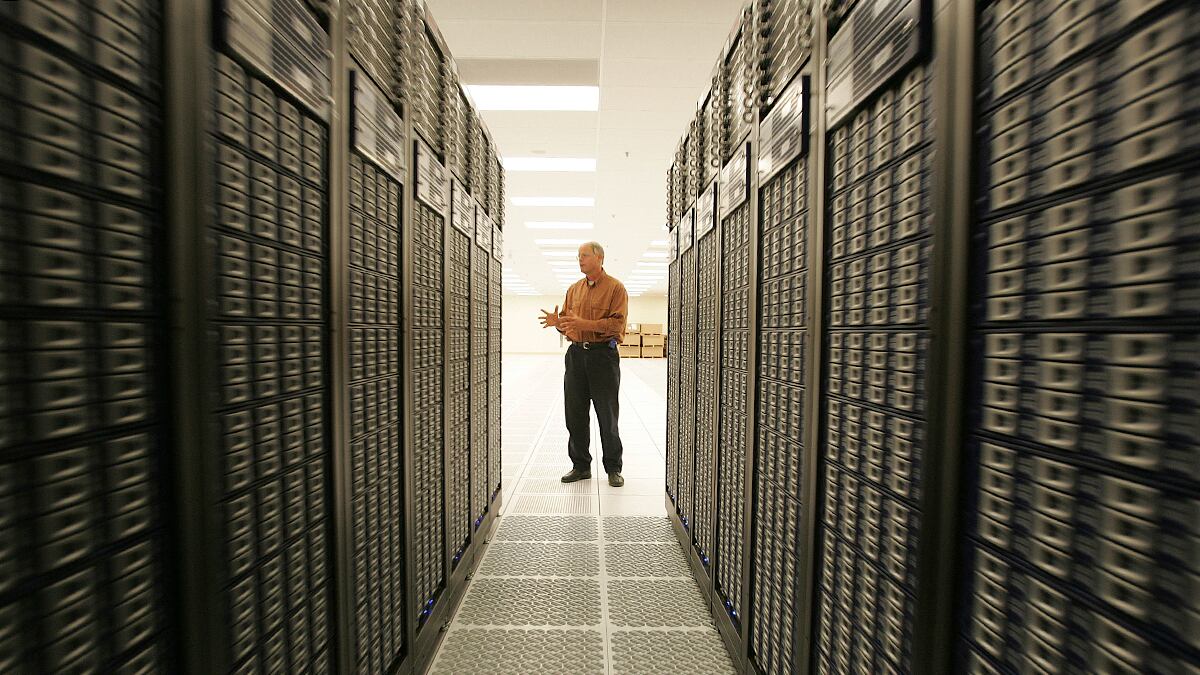As I reported recently in Newsweek, scientists at Lawrence Livermore National Laboratory are racing to build a new supercomputer, called Sequoia, that they hope will be the most powerful machine in the world once it’s completed by the end of 2012.
Meanwhile, another team at Oak Ridge National Laboratory has announced plans to build a machine of comparable power.
And yet another team at the National Center for Supercomputing Applications at the University of Illinois is assembling a supercomputer that will be not quite as mighty but will still rank among the most powerful machines in the world.
But there’s one big thing missing, according to people in the supercomputing community—we need more people who know how to make use of all this computing power. “It’s not enough to keep building powerful supercomputers unless we have the brains,” says Stan Ahalt, a 20-year supercomputing veteran and the director of a supercomputing center with its headquarters at the University of North Carolina at Chapel Hill. “Think of a supercomputer as a very fast racing engine. We need more drivers to use those engines.
” Supercomputers are used in a wide range of applications, from climate modeling to designing airplanes. They are far more complex than ordinary laptops and desktop computers. Some use hundreds of thousands of microprocessors. Writing software programs that can split work up among all those microprocessors is a daunting task and requires lots of specialized training, way beyond what the average computer science student gets.

Scientists refer to the talent shortage as the “missing middle,” meaning there are enough specialists to run the handful of world-beating supercomputers that cost a few hundred million dollars, and plenty of people who can manage ordinary personal computers and server computer—but there are not nearly enough people who know how to use the small and mid-sized high-performance machines that cost anywhere from $1 million to $10 million.
Those small and mid-sized machines have huge potential to help companies. In health care, for example, supercomputers could let scientists sift through mountains of data about patient populations to determine which treatments work and which ones don’t. Supercomputers could play a key role in genomics research that could let pharmaceutical companies develop drugs tailored to individual patients.
To get there, however, we need to start training more students. “It’s not that we’ve had a drop-off in enrollments, it’s that we need an increase,” says Jack Dongarra, a supercomputer specialist at the University of Tennessee. “We need people who can build the applications and algorithms needed to effectively use the equipment.
” Wu Feng, a professor of supercomputing at Virginia Polytechnic whose work focuses on small and mid-sized supercomputers, says companies are so hungry for talent that “I’ve even had different parts of a single company vying for my students. They’re in high demand.”
Feng has 15 graduate students, most of them from other countries. That’s another issue. Ahalt says in the past, U.S. supercomputing centers could attract top students from around the world, train them and keep them here.
But now many students leave the U.S. after getting their education because there are better opportunities in countries like India and China. And the U.S. is not training enough American students to fill the gap.
“We need to attract more young people to come into this very arcane field,” Ahalt says. “We need a new generation of scientists and engineers who know how to use supercomputers to solve complex engineering and science problems.
” One attempt to address the shortage is the Virtual School for Computational Science and Engineering, a program that offers online courses for graduate students who want to learn how to use high-performance computers.
This year 1,000 students participated, up from 40 in 2008 when the program began, says Thom Dunning, director of the National Center for Supercomputing Applications (NCSA) at the University of Illinois at Urbana-Champaign.
“This is really encouraging,” Dunning says. “We have a younger generation that’s willing to roll up its sleeves and learn how to program these big beasts.
” Another step is a consortium sponsored by NCSA and others whose goal is to get smaller companies using high-performance computers to design better products. NCSA will let small companies use its supercomputers, and will train people inside those companies to write programs to run on high-performance computers.
“We want to step outside this small group of very skilled experts, and build a broader class of people who can use this very specialized capability,” Dunning says.
If we don’t, Ahalt says, we risk falling behind rivals. China, for example, has recognized that high-performance computing creates economic advantages and is training huge numbers of scientists and engineers to use the machines.
“China already owns the market for low-end manufacturing, and with supercomputer expertise they will increasingly move into high-end manufacturing,” Ahalt says.
Falling behind in computing could mean falling behind in fields that rely on computation to get an edge on rivals. “What if we lose companies like Boeing, GE, Westinghouse, and IBM, as employers in the U.S.?” Ahalt says.
Today that seems unthinkable. Ahalt and his peers in the supercomputer community are hoping it stays that way.






